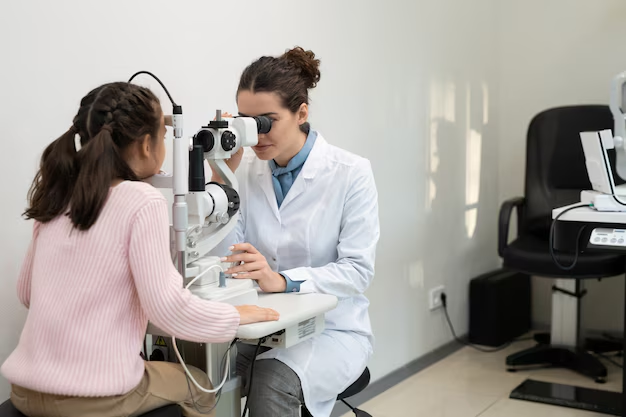Seeing Clearly Again: A Comprehensive Guide to Cataract Treatment
Imagine waking up one day and realizing that the world around you has become a foggy blur. For many individuals with cataracts, this isn't just a vivid imagination—it's their reality. Cataracts, a common condition causing clouding of the eye's lens, can interfere with daily activities and reduce quality of life. However, the good news is that cataracts are highly treatable. In this guide, we'll explore how cataracts are treated, delving into various methods and considerations that can restore your vision and improve your life.
🌟 What Are Cataracts?
Before diving into treatment options, it's essential to understand what cataracts are. Cataracts occur when proteins in the lens of the eye clump together, causing a cloudy area that can impair vision. Over time, this can lead to difficulties with reading, driving, and recognizing faces. While age is the most common cause, cataracts can also result from injury, certain medications, or medical conditions.
Signs and Symptoms
Recognizing the symptoms early can prompt timely intervention. Common signs include:
- Cloudy or blurred vision
- Increased difficulty with vision at night
- Sensitivity to light and glare
- Need for brighter lighting for reading
- Seeing "halos" around lights
Understanding these symptoms can lead individuals to seek an evaluation from an eye care professional, who can diagnose cataracts with a thorough eye examination.
🩺 Traditional Treatment: Cataract Surgery
Cataract surgery is the most conventional and effective method of treatment. It is also one of the most frequently performed surgeries worldwide, known for its high success rate and low risk of complications.
How Cataract Surgery Works
- Pre-operative Evaluation: An eye doctor will conduct a series of tests to measure the eye's health and determine the right lens prescription.
- Surgical Procedure: The surgeon removes the clouded lens from the eye and typically replaces it with an artificial lens, known as an intraocular lens (IOL).
- Recovery: Most individuals experience improved vision within a few days, and complete healing occurs over a period of weeks.
Types of Cataract Surgery
- Phacoemulsification: The most common method involves using ultrasound waves to break up the lens for removal through a small incision.
- Extracapsular Cataract Extraction (ECCE): This technique requires a larger incision to remove the cataract in one piece, typically used when the cataract is too dense.
- Laser-assisted Cataract Surgery: This newer approach utilizes femtosecond lasers for increased precision and is tailored to the individual's eye structure.
Pros and Cons of Surgery
Advantages:
- Restores clear vision
- Enhances quality of life
- Safe with quick recovery
Disadvantages:
- Requires surgery
- Potential for complications, although rare
- Some individuals might need glasses post-surgery
👓 Alternative Treatments and Management
While surgery is the definitive treatment, some individuals may not be ready or eligible for surgery. In these cases, managing symptoms through alternative approaches can be beneficial.
Non-surgical Management
- Vision Aids: Using magnifying glasses or stronger prescription lenses can help improve vision temporarily.
- Improved Lighting: Enhanced lighting in living areas and reading spaces can alleviate some of the difficulties caused by cataracts.
- Lifestyle Adjustments: Wearing anti-glare sunglasses and adjusting driving habits to reduce nighttime glare can improve day-to-day life.
Nutritional and Lifestyle Considerations
Though there's no conclusive evidence that diet can prevent or treat cataracts, maintaining a healthy lifestyle is beneficial. Consuming antioxidants, such as Vitamin C and E, and maintaining a balanced diet may support eye health. Quitting smoking and managing diabetes are also critical factors in reducing cataract progression.
🏥 Considerations Before Surgery
When planning for cataract surgery, several factors should be considered to ensure the best outcome.
Patient Candidacy
Not everyone with cataracts needs immediate surgery. Factors influencing the decision include:
- Impact on quality of life and daily activities
- Overall eye and systemic health
- Personal preferences
Selecting an Eye Surgeon
Choosing the right eye surgeon can significantly affect the surgical outcome. Tips for selection include:
- Checking credentials and experience
- Seeking recommendations from health professionals or trusted sources
- Consulting with the surgeon to understand the procedure and ask any questions
🎯 Visualizing Your Options: Treatment Summary
Here's a quick look at the key elements of cataract treatment to help guide decision-making:
📋 Quick Summary
- Surgery: Safe and effective, typically involves replacing the natural lens with an intraocular lens (IOL).
- Types of Surgery: Phacoemulsification, ECCE, and laser-assisted techniques vary based on individual needs.
- Non-Surgical Management: Vision aids and lifestyle adjustments can provide temporary relief.
- Patient Considerations: Evaluating personal needs, overall health, and selecting a qualified surgeon are crucial steps.
✨ Vision for the Future: Advances in Cataract Treatment
The field of ophthalmology continuously evolves with innovations aimed at improving patient outcomes.
Cutting-edge Innovations
- Multifocal and Accommodating IOLs: These lenses can address presbyopia, reducing dependency on glasses.
- Robotic Surgery: Enhances precision and outcomes through automated surgical techniques.
- Gene Therapy and Anti-cataract Drops: While still under investigation, these potential methods could revolutionize cataract treatment by reducing the need for surgery.
🤓 Empowering Decisions: What's Next?
While cataracts can be life-altering, understanding the various treatments available can empower you to make informed decisions about your eye health. From undergoing surgery to leveraging non-surgical options before opting for a definitive procedure, there are multiple paths to clarity.
Take Charge of Your Eye Health
- Regular Eye Exams: Frequent check-ups with an eye care professional can catch cataracts early and monitor progression.
- Educate Yourself: Understanding the condition and available treatments helps in making informed decisions.
- Discuss with a Specialist: Have open and detailed discussions with your eye care specialist about symptoms, treatment options, and timing.
In the quest for clearer vision, acknowledge that the journey is personal. Whether it's considering surgery or managing symptoms through lifestyle changes, solutions exist. With the right knowledge and resources, you can see the world in all its vibrant detail once more.
